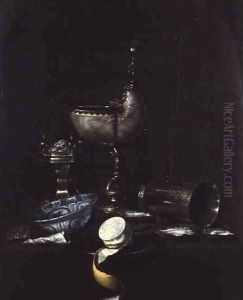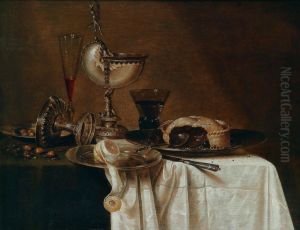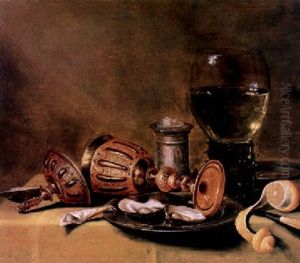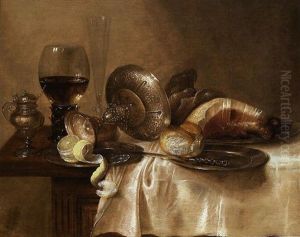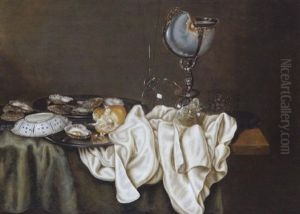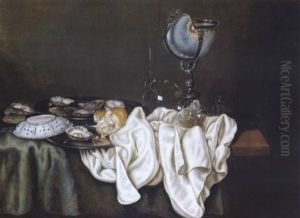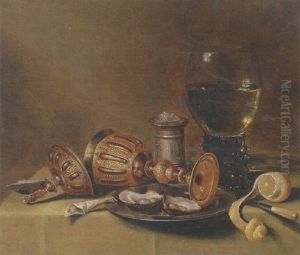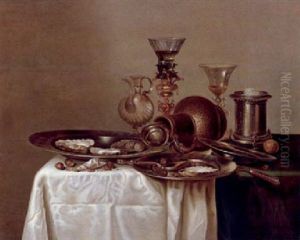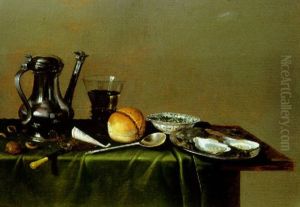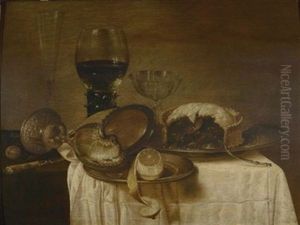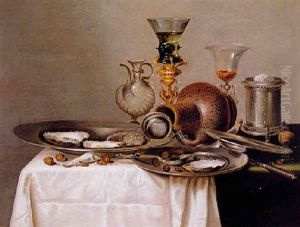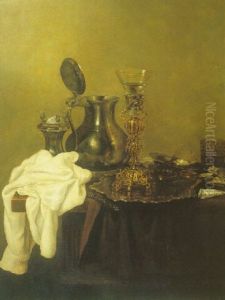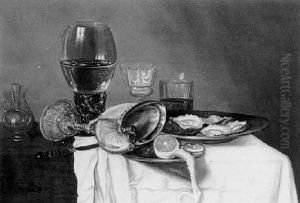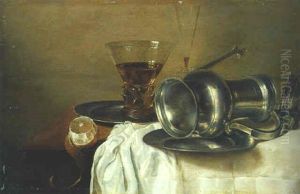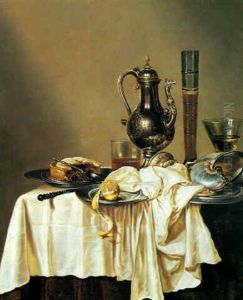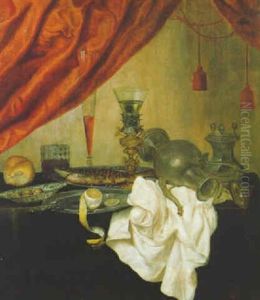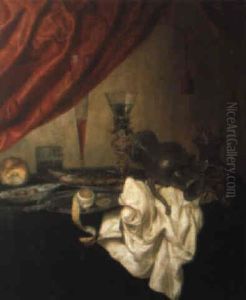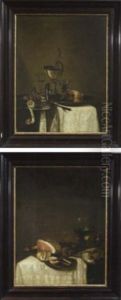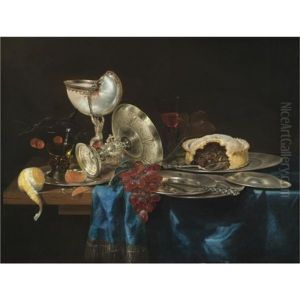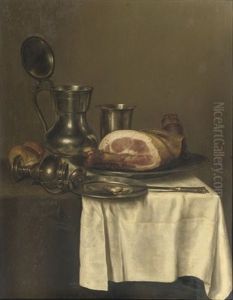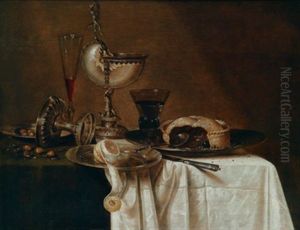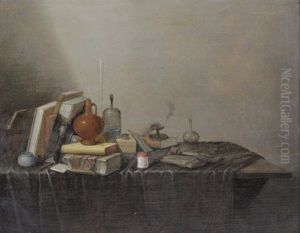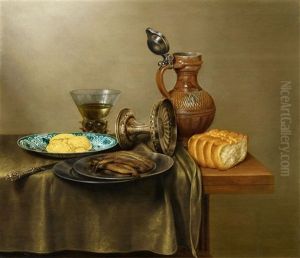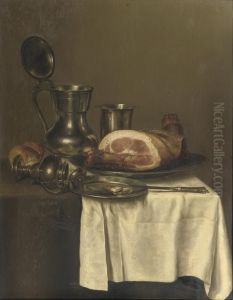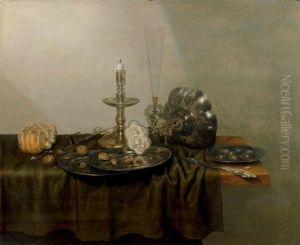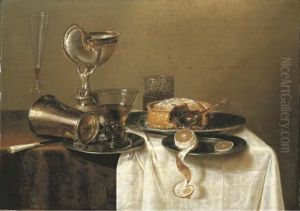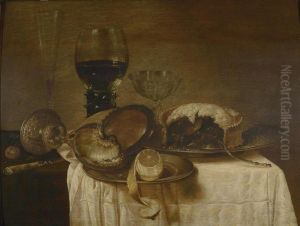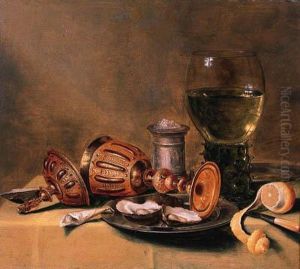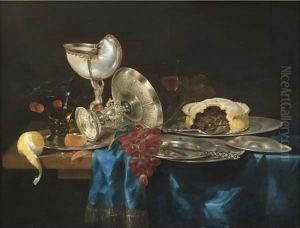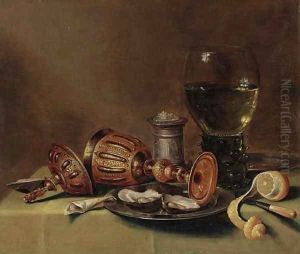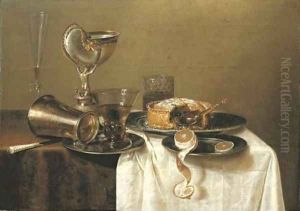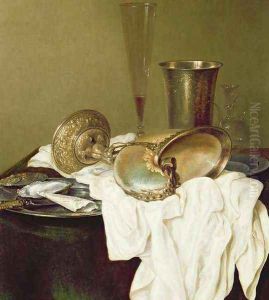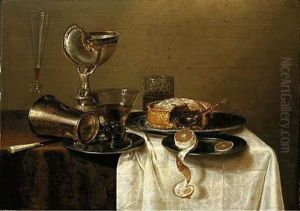Gerrit Willemsz. Heda Paintings
Gerrit Willemsz. Heda, who was born in Haarlem, the Netherlands, in either 1628 or 1629, is known to have been a Dutch Golden Age painter. He was the son of Willem Claeszoon Heda, one of the most influential still-life painters of his time. Gerrit followed in his father's artistic footsteps and became a painter himself, although far less is known about his life and work compared to his father's.
Gerrit Willemsz. Heda's paintings were similar in style to those of his father, and he specialized in the same type of still life, 'ontbijtjes' or breakfast pieces, which typically depicted tables set with food, drink, and tableware. These compositions were characterized by a subdued palette and an exquisite attention to detail and the rendering of different textures. However, Gerrit's work is considered less refined and his compositions less complex than his father's.
Unfortunately, there is little documentation on Gerrit Willemsz. Heda's career and specific works. His paintings have often been confused with those of his father, which has made it difficult to establish a clear oeuvre for Gerrit. It is believed that he was active in the art scene mainly during the mid-17th century, but the exact dates and extent of his work remain uncertain.
The death of Gerrit Willemsz. Heda is estimated to have been around the year 1700, although, like much of his life, the exact circumstances and date are unclear. His legacy, overshadowed by the prominence of his father, Willem Claeszoon Heda, has left Gerrit as a lesser-known figure in the history of Dutch painting. Despite this, his connection to the Heda family and the Dutch Golden Age of painting ensures that he remains a figure of some interest to art historians and enthusiasts of the period.
